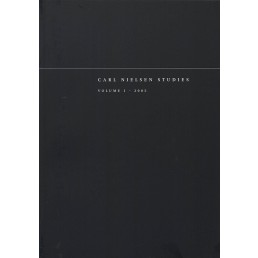Music as Life: Authority and Meaning in Nielsen's Fourth Symphony
DOI:
https://doi.org/10.7146/cns.v5i0.27768Abstract
Carl Nielsen has left us in an odd predicament. He “explains” his music in ways that defy being taken literally despite their tone of frank earnestness. At the same time, he works within established idioms and tropes that evoke meanings hard to reconcile either with his explanations (even taken figuratively) or, in some cases, with their host works. Thus, for example, his timpani duel in the Fourth Symphony may reasonably be understood, given its use of established representational tropes and its historical situation, to evoke a naval battle. As such, however, it articulates only awkwardly with Nielsen’s explanation for the symphony, including the famous claim, “Music is Life, and, as life, inextinguishable.” Drawing on this and similarly perplexing episodes in Nielsen’s symphonies, and considering as well his distinctive contrapuntal practices, I suggest a framework for understanding this explanatory labyrinth. I base this framework in part on Nielsen’s intuitive manner of working with his musical ideas and materials, which derives from and is coupled with his sense of music as a mysterious and powerful force that (to paraphrase Francis Bacon regarding nature) to be commanded, must be obeyed. Comparing Nielsen’s claims and practices with those of roughly contemporary figures such as Mahler and Scriabin, I then argue for a shared basis for these composers’ attitudes and approaches in German Idealism.Downloads
Published
2012-10-01
How to Cite
Knapp, R. (2012). Music as Life: Authority and Meaning in Nielsen’s Fourth Symphony. Carl Nielsen Studies, 5. https://doi.org/10.7146/cns.v5i0.27768
Issue
Section
Articles
License
- Authors retain copyright and grant the journal right of first publication with the work simultaneously licensed under a Creative Commons Attribution License that allows others to share the work with an acknowledgement of the work's authorship and initial publication in this journal.
- Authors are able to enter into separate, additional contractual arrangements for the non-exclusive distribution of the journal's published version of the work (e.g., post it to an institutional repository or publish it in a book), with an acknowledgement of its initial publication in this journal.

